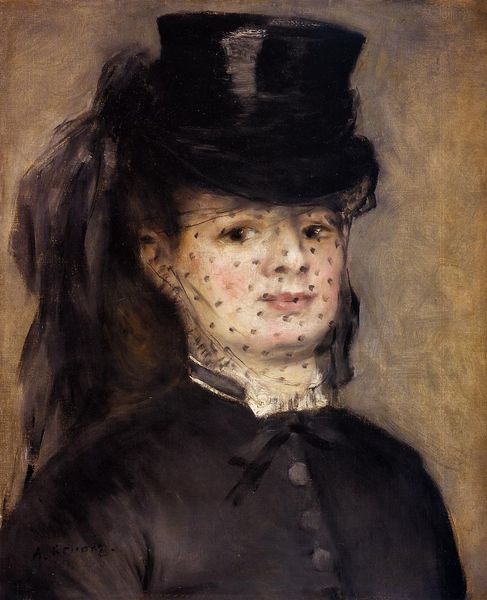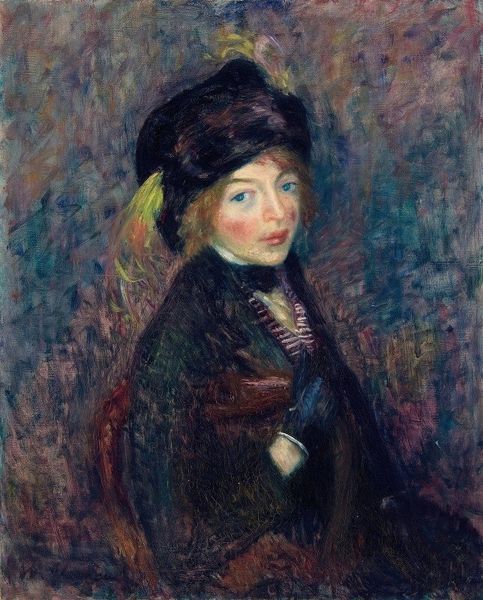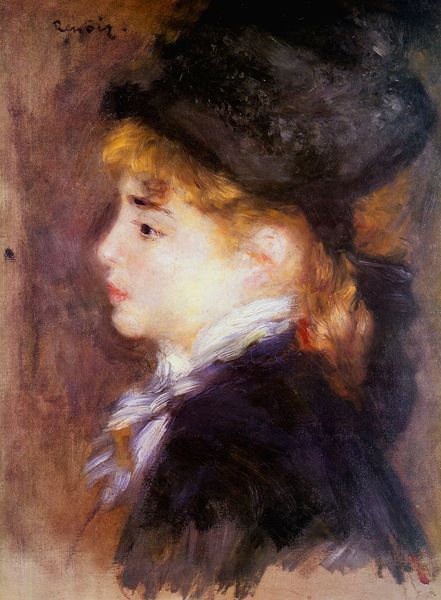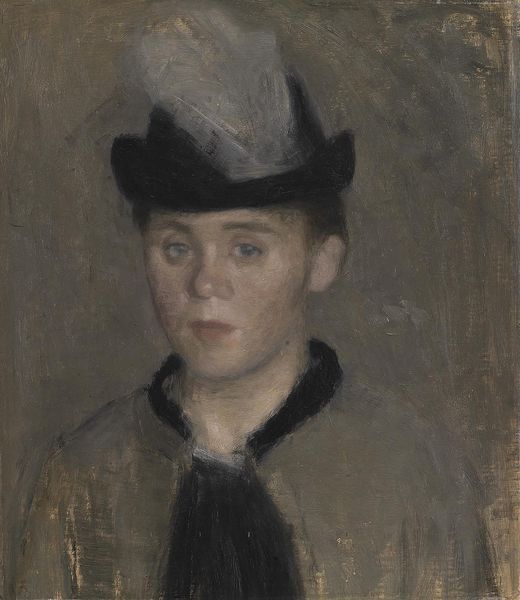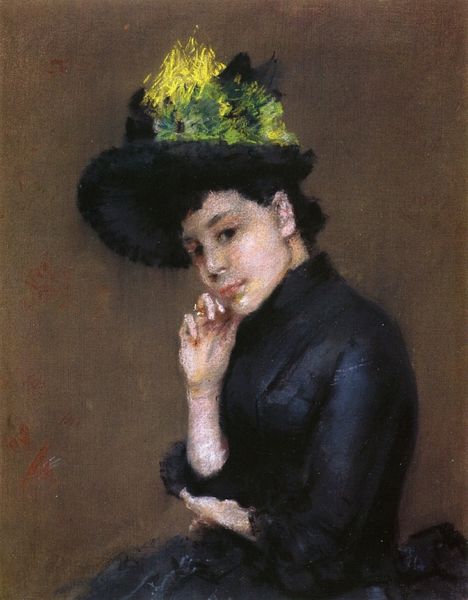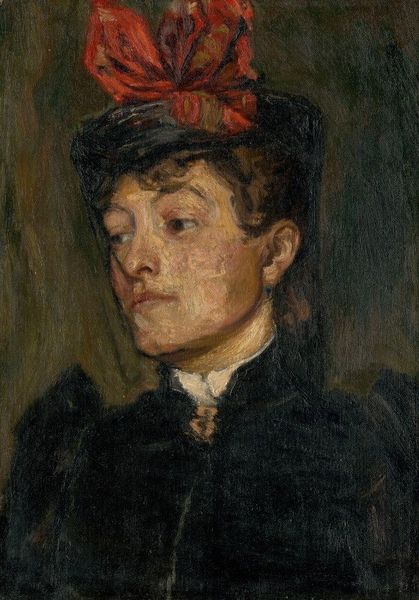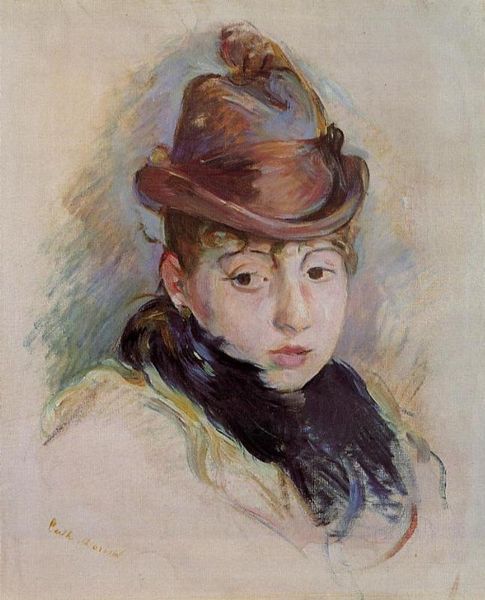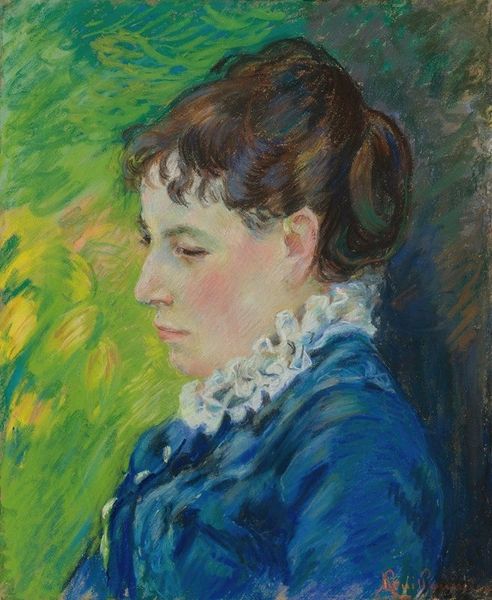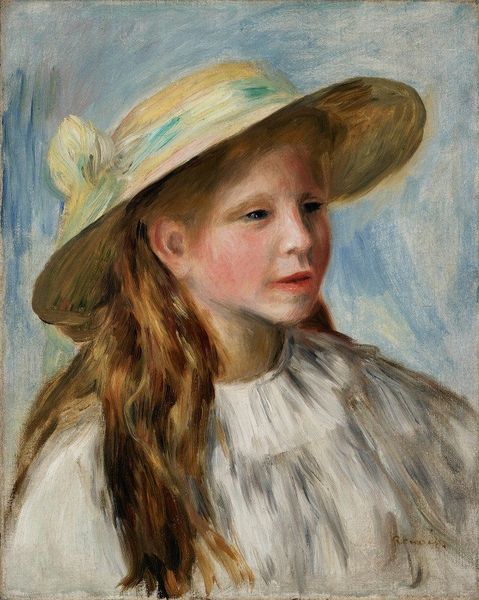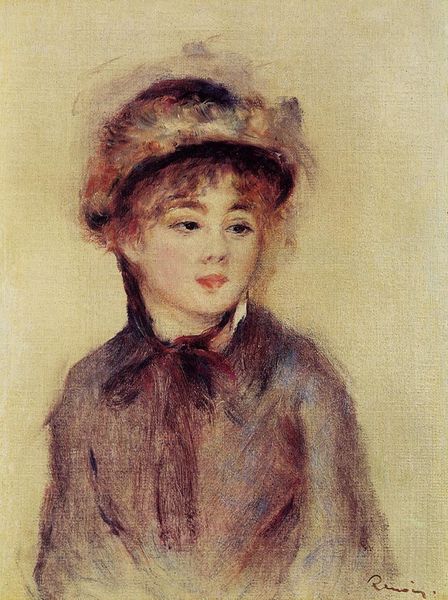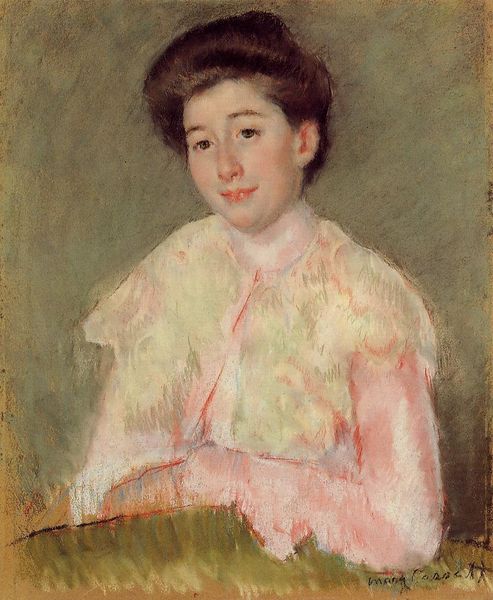
painting, pastel
#
portrait
#
figurative
#
painting
#
impressionism
#
oil painting
#
pastel
#
portrait art
Copyright: Public Domain: Artvee
Curator: Immediately striking is how demure, yet confident, the subject appears. Editor: Indeed. We're looking at Mary Cassatt's "The Black Hat," created around 1890, a pastel on paper portrait that showcases Cassatt's signature impressionistic style. Curator: The hat dominates, doesn't it? Its dark mass almost overpowers the delicacy of the young woman’s features, a striking contrast. Consider also the semiotic relationship between hat and figure: what unspoken codes of class, or taste are at play here? Editor: Fascinating. Speaking of the "mass," let's look at the materials. Cassatt masterfully exploits the pastel medium. See how those strokes of colour blend into the paper fibres creating both depth, yet still revealing its own texture. Her mark-making becomes almost like a fabric itself! This textural, tactile element pulls me toward considerations of process and material, especially what papers Cassatt might be employing here. Curator: Precisely! Notice also the strategic arrangement of light and shadow which, in the best Impressionist tradition, work to both delineate, but also disrupt outlines: see around the shoulders how shadow both confirms yet erases form. This very visible facture reinforces an overriding structural elegance to the work. Editor: The visible mark is vital, it's true. You can practically see her hand at work—I think understanding *how* she applied these colours, the pressure, the sequence, starts to hint at an alternative method for creating "feminine" artwork. After all, portraiture offered financial rewards, artistic acknowledgement, social mobility and a modicum of independence for someone like Cassatt, as it enabled a degree of control of production and its socio-economic reach that some other genres denied. Curator: I concur that visibility matters, particularly within an art market obsessed by surface appearance: an anxiety explored throughout Symbolism in paintings, poems, prose... So the application—the formal application, I would emphasize—mirrors something of society's obsessions here! Editor: Ultimately, while it's undoubtedly a portrait capturing an individual, "The Black Hat" makes visible the labor, choices, and contexts shaping it: pastels becoming more than representation. Curator: A most insightful assessment, viewing Cassatt's choice in medium alongside considerations of style itself; perhaps this unlocks an access to hidden tensions within society. Editor: Thank you. Understanding production nuances can greatly re-illuminate artwork beyond only a concern for its 'visual elements.'
Comments
No comments
Be the first to comment and join the conversation on the ultimate creative platform.
